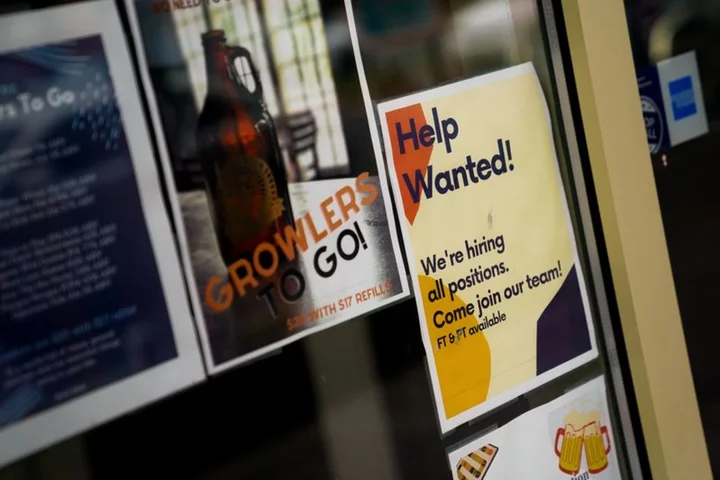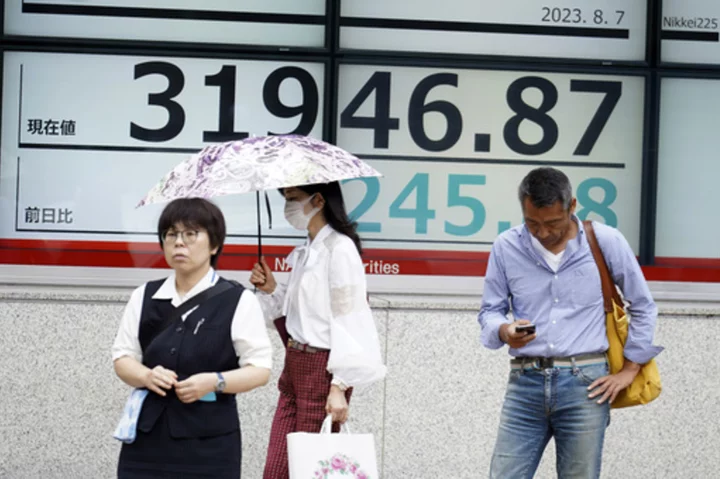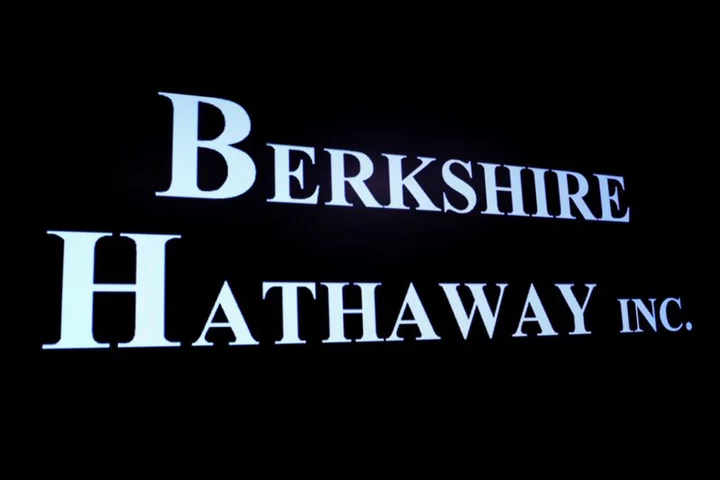By Lucia Mutikani
WASHINGTON U.S. job growth likely slowed moderately in September while the unemployment rate probably retreated from a 1-1/2-year high, underscoring the economy's underlying strength amid rising headwinds as the year winds down.
The Labor Department's closely watched employment report on Friday is also expected to show wage gains remaining elevated. Eighteen months after the Federal Reserve started raising interest rates, the labor market is only gradually easing.
Labor market resilience, which is underpinning demand in the economy, raises the risk that the U.S. central bank could hike rates again by year end. Most economists believe it is done raising rates, but will rather keep monetary policy tight for some time.
"While payroll growth is much slower than in previous years, it doesn't look like it's falling off a cliff," said Nick Bunker, research director at the Indeed Hiring Lab in Tampa, Florida. "If we see another number in excess of 100,000 jobs a month, that's another sign that the labor market is moderating, but continues to have a lot of strength and resilience."
Nonfarm payrolls likely increased by 170,000 jobs last month after rising 187,000 in August. While that would be the fourth straight month of employment gains below 200,000, payrolls would be well above the roughly 100,000 per month needed to keep up with growth in the working-age population. Payrolls are around averages that prevailed before the COVID-19 pandemic.
Some economists believe payrolls could surprise on the upside, noting that first-time applications for state unemployment benefits dropped in September to the lower end of their 194,000-265,000 band for this year.
They argued that the seasonal adjustment factor, the model that the government uses to strip out seasonal fluctuations from the data, was more generous to private payrolls in September.
"Hiring typically picks up at the start of the summer vacation season, but rising initial jobless claims in the first few weeks of June was an early signal hiring was not quite as strong as in a usual year," said Veronica Clark, an economist at Citigroup in New York. "Typically, these summer hires fall off payrolls after the Labor Day holiday, with a large positive seasonal adjustment to private payrolls in September."
According to Clark, the decline in initial jobless claims from mid-September likely reflected fewer post-summer layoffs as the initial hiring was also less, which she said should similarly result in somewhat stronger September payrolls.
While the ADP National Employment report showed private payrolls growth falling below 100,000 in September, the report has not been a reliable predicator of the private payrolls component in the Labor Department's employment report.
NO STRIKE IMPACT
A strike by the United Auto Workers (UAW) at General Motors, Ford Motor and Chrysler parent Stellantis likely had no impact on the payrolls count as it started towards the end of week that the government surveyed business establishments for September's employment report.
No boost was expected from the end of a months-long strike by Hollywood actors, which resulted in a decrease of 17,000 jobs in the motion picture and sound recording industries in August, as it happened outside the survey period. The strike by roughly 25,700 of the 146,000 hourly members of the UAW is expected to have an impact in October's employment report.
The unemployment rate was forecast falling to 3.7% after surging to 3.8% in August, the highest since February 2022. It was driven by a jump among the 20-24 age group, viewed as a volatile cohort.
Wage growth likely remained solid, with average hourly earnings forecast to have risen 0.3% after climbing 0.2% in August. That would leave the annual increase in wages unchanged at 4.3% in September.
Wages are still rising faster than the 3.5% pace that economists say is consistent with the Fed's 2% target. But as fewer people quit their jobs in search of greener pastures, wage growth could moderate. Since March 2022, the Fed has raised its benchmark overnight interest rate by 525 basis points to the current 5.25%-5.50% range.
Labor market strength is helping to sustain the economy, with growth estimates for the third quarter as high as a 4.9% annualized pace, well above what Fed officials regard as the non-inflationary rate of around 1.8%.
But dark clouds are gathering over the economy amid rising oil prices and political dysfunction in Washington.
Millions of Americans resume student loan repayments this month, which economists say will weigh on consumer spending, impacting purchases of long-lasting manufactured goods, houses as well as travel and entertainment, with ripple effects on employment. Economists estimate that the expiration of the more than three-year moratorium could cut at least $400 per month from budgets of households carrying student debt.
"Where we are right now might be the best it's going to get for a while," said Megan Way, associate economics professor at Babson College in Wellesley, Massachusetts. "You just can't suck that much money out of one sector of the economy and back into debt repayments without it having an impact on the labor market. I wouldn't say it's going to throw the economy into recession, but there are going to be industries that take a hit."
(Reporting by Lucia Mutikani; Editing by Andrea Ricci)









